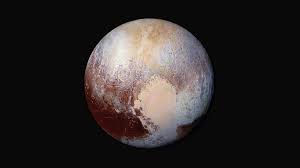Meteoroids, when do they become dangerous?
- Reuben Dempster
- Aug 3, 2022
- 3 min read
Meteoroids have been entering the earth's atmosphere since its birth (4.543 billion years ago) and will keep coming. The space rocks create spectacular shows in our night sky as they burn through our atmosphere. They may create pretty displays, but at what point do they become dangerous?

When they reach over 25 m in diameter, then Meteoroids no longer burn up in our mesosphere (a part of our atmosphere). Instead, an impact would occur. Anything smaller than 25 m burns up in the mesosphere because the Meteoroids move at extreme speed through the air and create excessive heat. Metoriods don't usually even have time to reach any of our other levels of the atmosphere, which are much denser because they burn up before then.

What are Meteoroids?
Meteoroids are space rocks that are babies of asteroids/comets. They are bits of rocks or dust that have fallen off asteroids/comets from collisions; our meteoroids come from the asteroid belt between Mars and Jupiter, which orbit the sun. The meteoroids that break free of the gravitational pool travel through the emptiness of space looking for an object to collide with; sometimes, this happens to be us. It is estimated that around 35 million meteoroids hit earth each year, and 15,000 tons of material enter the earth's atmosphere yearly.
But what if a meteorite did hit earth? Around 500 meteorites hit earth yearly, but only around ten are discovered because the majority hit the oceans or uninhabited areas. Fun fact, meteorites are called meteorites if they survive the trip down to earth. We do not notice these 500, or so meteorites hitting earth because they are generally small and land in the middle of no wear. A much bigger meteoroid is needed to get our attention; Nasa believes, "If a rocky meteoroid larger than 25 meters but smaller than one kilometer ( a little more than 1/2 mile) were to hit Earth, it would likely cause local damage to the impact area." (Nasa). The damage could consist of a creator being formed, destruction of any nearby infrastructure or wildlife, and possible fires. However, this is little compared to what would cause problems worldwide. Nasa says, "We believe anything larger than one to two kilometers (one kilometer is a little more than one-half mile) could have worldwide effects." (Nasa). A meteorite this big could be the end of the earth. A meteorite the size of a house would have the same force as the Hiroshima bomb dropped in 1945; an asteroid 800m wide could destroy a state the size of Virginia in America. From the impact, dust would be sent into our atmosphere, blocking out all sunlight and causing dramatic effects on the earth's climate. Finally, a meteorite that is the size of mount Everest would vaporize everything within 100 km of the site of impact; this would be the end of almost all life on earth from the subsequent fallout. The dust would create a cold and desolate plant, making life impossible to live sustainably. It would be an ice age for a year.

Examples of when it has
Earth has seen many meteoroids, but none so dyer than Chicxulub. Chicxulub was a 9.6 km wide Metroid that hit the earth around 66 million years ago. It was responsible for the Cretaceous–Paleogene extinction event, which wiped out the dinosaurs, with 75% of the world's living dead. The creator was founded off of the cost of Mexico. A more recent event was not quite as significant, and it occurred in the cold of Siberia, Russia. The Tunguska event, as it was named, occurred on the 30th of June 1904, and it demolished in seconds 60 million trees. However, in this case, no fragments of the meteorite were found; scientists now believe that the meteoroid only glanced at the earth, creating a tremendous shock wave, and then curved away from the earth before entering our atmosphere.
Although meteoroids sound scary and dangerous, the chances of the earth being hit by anything big enough to cause significant damage are very few. Firstly within our solar system, we have Jupiter to thank. Jupiter is 139,820 km in diameter; this means that it has a huge gravitational pull, which attracts almost all meteoroids. Then we have the moon, which also protects us from collisions because it is far more likely for it to be hit than us. Then finally, we need to thank our atmosphere as this is what burns up the meteoroids; if we didn't have an atmosphere, we would look more like the moon. Overall the chances are very slim, but there is always a chance that another mass extinction will occur.





Comments